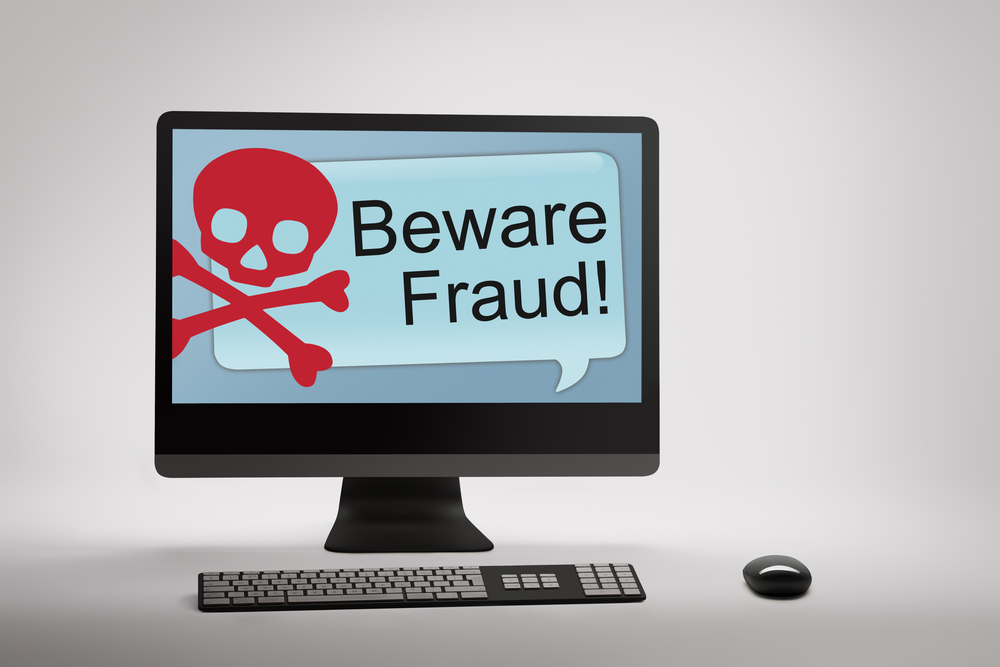Credit Cards & Loans
How to spot a ghost website and stay safe online

Fake websites are used by scammers to con you into paying for goods that will not arrive, and to harvest your personal details for all manners of criminal activity. Read our tips to stay safe online.
Unfortunately, fake websites can look very much like the real deal, and it may be difficult to spot differences between them and the actual website it’s trying to replicate.
A recent survey by first direct revealed that nearly three quarters of the UK’s population has experienced some type of fraud attempt, with 55% of those falling victim to scams carried out online.
But as over a third of British shoppers do their shopping online, and more and more are turning to the world wide web rather than the high street to get their goods and services, it is now more important than ever to make sure you don’t become a conman’s next victim.
But there are ways to spot fake sites. Here are some top tips from the experts at knowthenet.org:
How to spot a fake website…
1. Update your software – Your internet browser includes security functions which can help spot sites masquerading as trusted sites, and can even tell you before you arrive that the site is a fake. Check that the security options are enabled in your browser.
2. Check the signs – Before entering any banking information, make sure your you can see some essentials signs that will flag up anything risky or unsafe.
Without the following signs, there’s no guarantee of security or encryption of your details. Any major online retailer will have these security measures as standard:
Padlock or unbroken key icon
• These show that the site is enabled and encrypted for online safety. Encryption is a data-scrambling technology that keeps crooks from stealing your personal financial information.
https:
• An ‘https:’ starts the web address when you check out
• Make sure that ‘https: — not just an ‘http: — begins the webpage address at the top of your screen before you key in your credit card information at checkout. That final ‘s’ means that a secure, encrypted connection is in place between your computer’s browser (ie, Internet Explorer) and the website you’re visiting. If you don’t see the final ‘s’ starting the address when checkout time occurs, stop the transaction.
Verisign TrustedVeriSignTrust Seal
• The VeriSign Trust Seal means that VeriSign has verified a website company’s identity. The seal verification page displays their business information and encryption information, and shows that the Web site has passed a daily malware scan, helping visitors feel safe from search to browse to buy. Combined with a closed padlock, https in the URL or a green address bar, the seal also means the site is secured by a VeriSign SSL Certificate.
Trusted Shops scheme
• Trusted Shops certifies online shops by carefully checking them against a set of quality criteria before they can qualify for displaying the European Trustmark. The combination of Trusted Shops’ money-back guarantee and seller rating system mean you are able to order online with confidence.
• Every shop that has been awarded the Trustmark is proven to offer reliable buyer protection, enabling you to safely browse and buy from these sites. So that you can make and pay for orders with confidence, you are protected against the loss of your purchase price payment in the event of non-delivery or after returning the goods – regardless of the method of payment.
3. Cheap-looking sites – Fake sites masquerading as big brands don’t necessarily have the time and investment dedicated to them as the real thing. Be suspicious if words are misspelt or pictures and logos look shoddy.
4. Do your research – If you haven’t used a website before, check its credentials. Search for alternative contact details such as address or phone number – if in doubt, call them first. Look on forums and blogs for reviews and advice from previous users of the site. Until you’re confident that the site is genuine, don’t give up any personal details.
5. Trust your instincts – If a deal seems too good to be true, it probably is. If you ever feel a site isn’t legitimate, don’t enter any personal information, and leave immediately.
6. Be wary – If a site you regularly visit seems different, double check that it’s the real site. Websites often change, but if you’re asked for a different set of information than you’re used to, and you haven’t been warned of site changes on your previous visits, you may be on a fake site.
7. Typos – Watch out for poor English such as typo and grammar mistakes, or phrases that don’t sound quite right. It could mean the site isn’t genuine and put together by someone overseas.
8. T&Cs – Make sure you read the terms and conditions carefully before buying a product, particularly those relating to getting a refund or disputing a product. These can often give a clue as to whether a product is genuine or not.
9. Get postal – If you have found a product online and you’re not sure if they are legitimate, check the website for a full UK or European postal address and a working telephone number. A lot of counterfeiters come from outside of Europe so the chances are they could be fake.
10. co.uk – But please note that a website address ending in .co.uk does not necessarily mean the site is based in the UK, so this should be treated with caution.
and lastly, there is a common misconception that if a site ranks high on a web search engine that it must be genuine. Fraudsters can use advertising space or sponsored links to appear high up and therefore seem most relevant.